Tags
1903, 1931, Charlie Taylor, Evolution of Flight, Franklin D. Roosevelt, George Cayley, Jon Bingham, Kitty Hawk, Leonardo da Vinci, National Aviation Day, Nolie Mumey, North Carolina, Octave Chanute, Orville Wright, Otto Lilienthal, Samuel Langley, The Kendrick Bellamy Company, Wilber Wright, Wright Brothers, Wright Flyer I
“Some of the myths of yesterday are the facts of today. The advance and evolution of flight is fully appreciated by the world at large. The long process of its growth can be vividly traced by reading the early legends and following them through the various stages of development. The early investigators, the daring balloonists, the ingenious gliders – all have contributed to this wonderful achievement.”
~ Nolie Mumey, from the Foreword of Evolution of Flight
Evolution of Flight: Stories based on legendary and historical data
Nolie Mumey
Denver: The Kendrick Bellamy Co., 1931
TL515 M8 1931
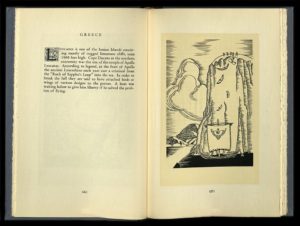 It is easy to take for granted how far we’ve come in the field of aviation. Given the money and the appropriate political documentation, anyone can get to the other side of the world within a twenty-four-hour period of time. This fact is really quite mind boggling when one takes a moment to ponder it. I recently took a trip which involved flying in an airplane. While preparing for the upcoming flight I was more concerned with making sure I didn’t have any liquids in my carry-on bag when I got to the security check point than I was about the fact that I was about to sit inside a large piece of metal as it flew through the air at hundreds of miles per hour thirty thousand feet above the ground. I doubt I am alone in this warped sense of concern when it comes to travel via commercial airline. Flying has become so common place it is interesting to consider that we have only had the technology to travel in this way for a little over a century. For thousands of years before we finally succeeded in achieving sustained flight people had dreamed of doing so.
It is easy to take for granted how far we’ve come in the field of aviation. Given the money and the appropriate political documentation, anyone can get to the other side of the world within a twenty-four-hour period of time. This fact is really quite mind boggling when one takes a moment to ponder it. I recently took a trip which involved flying in an airplane. While preparing for the upcoming flight I was more concerned with making sure I didn’t have any liquids in my carry-on bag when I got to the security check point than I was about the fact that I was about to sit inside a large piece of metal as it flew through the air at hundreds of miles per hour thirty thousand feet above the ground. I doubt I am alone in this warped sense of concern when it comes to travel via commercial airline. Flying has become so common place it is interesting to consider that we have only had the technology to travel in this way for a little over a century. For thousands of years before we finally succeeded in achieving sustained flight people had dreamed of doing so.
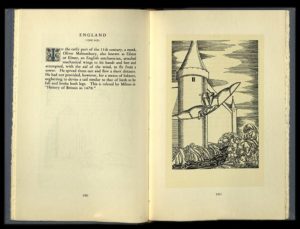 Each year, on August 19th, the United States of America celebrates National Aviation Day. Created by President Franklin D. Roosevelt in 1939, the day is a commemoration of the development of modern aviation. The 19th of August was selected for its observance because Orville Wright was born on this day in 1871. Orville and his older brother Wilbur are credited with achieving the first controlled, sustained flight of a powered, heavier-than-air aircraft. At 10:35 a.m. on December 17, 1903, four miles south of Kitty Hawk, North Carolina, Orville lifted off into a 27 mile per hour head wind and flew for 12 seconds at an altitude of 10 feet, flying at 6.8 miles per hour and covering 120 feet of ground. Both brothers flew twice that day, Wilbur making the fourth and final flight of the day at about noon, during which he sustained flight for 59 seconds and flew 852 feet.
Each year, on August 19th, the United States of America celebrates National Aviation Day. Created by President Franklin D. Roosevelt in 1939, the day is a commemoration of the development of modern aviation. The 19th of August was selected for its observance because Orville Wright was born on this day in 1871. Orville and his older brother Wilbur are credited with achieving the first controlled, sustained flight of a powered, heavier-than-air aircraft. At 10:35 a.m. on December 17, 1903, four miles south of Kitty Hawk, North Carolina, Orville lifted off into a 27 mile per hour head wind and flew for 12 seconds at an altitude of 10 feet, flying at 6.8 miles per hour and covering 120 feet of ground. Both brothers flew twice that day, Wilbur making the fourth and final flight of the day at about noon, during which he sustained flight for 59 seconds and flew 852 feet.
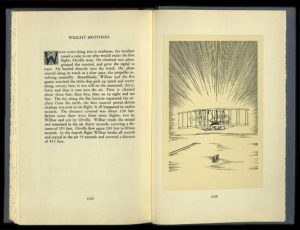 After experimenting with gliders in the 1890s (based upon research done by Leonardo da Vinci, Octave Chanute, George Cayley, Otto Lilienthal, Samuel Langley, and others), the Wright brothers constructed their powered Wright Flyer I using spruce wood and Pride of the West muslin. They designed and carved their own propellers and, when they couldn’t find anyone able to build an engine to their weight specifications, turned to their shop machinist and mechanic Charlie Taylor – who in only six weeks engineered and built a lightweight power plant for the Wright brothers. To minimize weight, Taylor cast the engine block from aluminum. The 152-pound engine exceeded the power output requirement of 8 horsepower by delivering 12. Using heavy duty chains that resembled those used for bicycles, the engine drove the dual eight feet long propellers. The Flyer had a wingspan of 40.3 feet and weighed 605 pounds.
After experimenting with gliders in the 1890s (based upon research done by Leonardo da Vinci, Octave Chanute, George Cayley, Otto Lilienthal, Samuel Langley, and others), the Wright brothers constructed their powered Wright Flyer I using spruce wood and Pride of the West muslin. They designed and carved their own propellers and, when they couldn’t find anyone able to build an engine to their weight specifications, turned to their shop machinist and mechanic Charlie Taylor – who in only six weeks engineered and built a lightweight power plant for the Wright brothers. To minimize weight, Taylor cast the engine block from aluminum. The 152-pound engine exceeded the power output requirement of 8 horsepower by delivering 12. Using heavy duty chains that resembled those used for bicycles, the engine drove the dual eight feet long propellers. The Flyer had a wingspan of 40.3 feet and weighed 605 pounds.
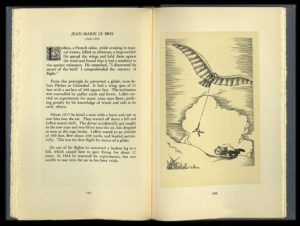 To put Taylor’s engine into perspective, the self-propelled lawn mowers most of us have in our sheds today average between 5 and 7 horsepower and those of the riding variant average between 15 and 20. Building a frame of spruce wood, covering it with muslin, and placing on it the equivalent of a lawn mower engine hooked via chains to a couple of propellers seems fairly straight forward and something an engineering-minded and mechanically-inclined high school student might do during a summer break to pass the time. We, who are accustomed to seeing pictures of the SR-71, Concorde, and F-35 Lightning II, may easily take the Wrights’ achievement for granted, thinking of it as primitive. To think such, however, would show a lack of understanding for what was achieved in 1903. While Taylor’s six-week turnaround in designing and building a lightweight engine is impressive, the true accomplishment that brought the Wright brothers their fame was the development of three-axis control because it was this system that enabled a pilot
To put Taylor’s engine into perspective, the self-propelled lawn mowers most of us have in our sheds today average between 5 and 7 horsepower and those of the riding variant average between 15 and 20. Building a frame of spruce wood, covering it with muslin, and placing on it the equivalent of a lawn mower engine hooked via chains to a couple of propellers seems fairly straight forward and something an engineering-minded and mechanically-inclined high school student might do during a summer break to pass the time. We, who are accustomed to seeing pictures of the SR-71, Concorde, and F-35 Lightning II, may easily take the Wrights’ achievement for granted, thinking of it as primitive. To think such, however, would show a lack of understanding for what was achieved in 1903. While Taylor’s six-week turnaround in designing and building a lightweight engine is impressive, the true accomplishment that brought the Wright brothers their fame was the development of three-axis control because it was this system that enabled a pilot 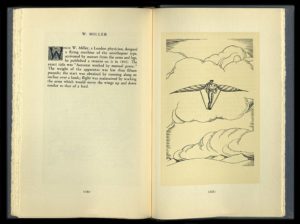 to steer the aircraft effectively and to maintain its equilibrium. It was what had eluded all other aeronautical investigators up until the turn of the 20th century.
to steer the aircraft effectively and to maintain its equilibrium. It was what had eluded all other aeronautical investigators up until the turn of the 20th century.
Although on National Aviation Day we celebrate the accomplishments of the Wright brothers, we should remember that there were many people who contributed to the pursuit of flight over a span of roughly two thousand years. Written by *Nolie Mumey, Evolution of Flight: Stories based on legendary and historical data takes the reader, as the title makes clear, through the history of thousands of years in which we developed the ability to fly thousands of miles in a few hours. Granted, most of the significant progress was made in the last two centuries prior to powered flight – but we shouldn’t discount even the earliest efforts because it shows the power of dreams and where those dreams can take us.
~ Contributed by Jon Bingham, Rare Books Curator
*Nolie Mumey (1891 – 1984) graduated from the University of Arkansas Medical School in 1916 and became a surgeon. He went on to earn a Master of Science degree from the University of Pennsylvania and a BA and MA from the University of Denver. A twentieth-century Renaissance man, Mumey was also a poet, silversmith, aviator, carpenter, woodcarver, artist, and inventor. He had an extensive collection of books and artifacts of the American West and its history. He wrote numerous books on both medical and Western history.


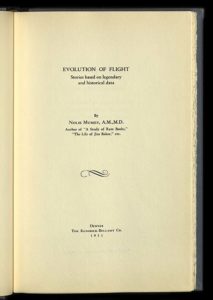
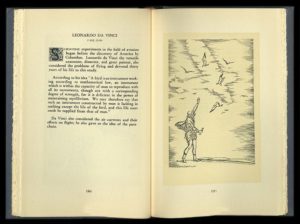
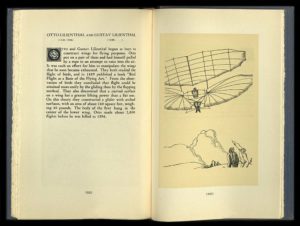
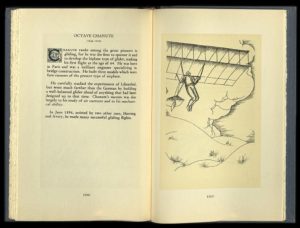
You must be logged in to post a comment.